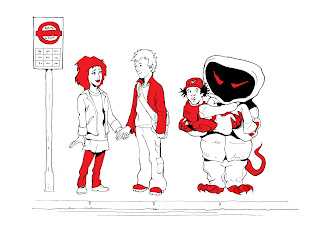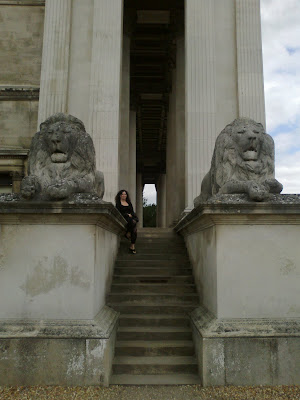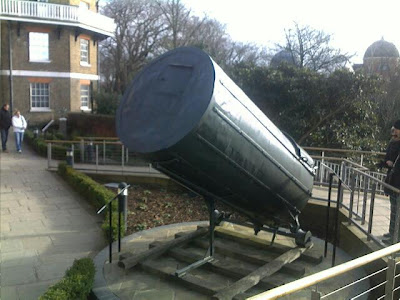“Archaeologist and Man of Action” says the back cover of
Still Digging, the 1955 autobiography by archaeologist, soldier and “acclaimed Television Personality of the Year”, Mortimer Wheeler. Wheeler's something of a hero – Indiana Jones as played by Terry-Thomas, with moustache and twinkling mischief. This illustrated 2'6 paperback has been a joy to read.
Wheeler himself calls the book,
“an average life in one of the great formative periods of history”.
Sir Mortimer Wheeler, Still Digging – Adventures in Archaeology (1958 [55]), p 9.
He deftly brings to life service in two World Wars and the violence of the partitioning of India up close – there's a thrilling account of him rescuing a Muslim colleague's family from a siege only for them to tick him off for not bringing their luggage, too. All in all, it's a rather chappish rollick through his life, with excerpts from diaries and correspondence to add vivid contemporary detail. It's generally fun and good-humoured, with an eye for the absurd character or moment. At the same time, he's forthright in his opinions.
“The British Museum I abjured [as a young man] as I abjure it today, a place that suffers from a sort of spiritual cataract and out-stares the visitor with unseeing eyes.”
My 1958 edition adds a footnote to this view:
“I regret this remark. It was written before I became a Trustee of the British Museum and, had truth permitted, I should have deleted it.”
Ibid., p. 24.
That forthrightness is matched by an unapologetic vocabulary when speaking of other nations. There's plenty, for example, on the habits of “the Hun”. Yet for all the racial terminology, he's also strikingly tolerant for his time. The following passage is a typical mix:
“I have in mind the sixty-one students who flocked to me from the universities of India and from the archaeological departments of the Indian states: swarthy Muslims from the North-West Frontier and the Punjab, little round-faced talkative Bengalis, quick-witted Madrasis, dark southerners from Cochin and Travancore. Also, today – only a few years later – such an assemblage of races, tongues and creeds would no longer be feasible. Religious and political barriers have split asunder those who in 1944 worked together with single purpose and common understanding.”
Ibid., p. 174.
It's not just that he wished other races would bally well get along with one another. He's an enthusiastic participant in World War Two, but when the Eighth Army pushes the Germans out of Libya, he's happy to work with Italian – that is, enemy – and Libyan archaeologists, freely acknowledging their superior skill and expertise. He also readily credits the many women archaeologists he's worked with over the years, and is carefully to cite both their unmarried and married names. Foreigners, natives and ladies are treated as equals – all that matters is that they're up to the job.
Wheeler delights in archaeology as a proper, bona fide science, describing particularly fine discoveries or developments in method, and reporting with special glee when some new piece of evidence torpedoes a long-standing theory. He's surprisingly modest about his own contributions to the field – such as
dividing digs into grids. Acutely aware that so many of his peers had been killed in the First World War, he concludes that his eminence in the profession,
“was the outcome of circumstance, not merit”.
Ibid., p. 206.
There's a shadow over much of his otherwise jolly outlook. As well as the wars, there's the death of Wheeler's first wife, Tessa, in 1936. Wheeler was away on a dig at the time. His account of learning the news while heading back to England and seeing it in the paper is told with exemplary restraint, which makes it all the more haunting.
He's quick to credit Tessa's contributions to several of his digs. But there's just a single, brief mention (on page 183) of Margaret, his wife at the time of writing, and no mention at all of the wife in between.
As I posted a few weeks back, Mavis was drawn and bedded by
Augustus John – before and perhaps after her marriage to Wheeler. Wheeler divorced her in 1942 having caught her with another lover and excised her completely from his memoirs. John, though, gets a mention several times – and even gave the book it's title. (There's no mention of the duel.)
Wheeler is otherwise cagey on the subject of girls. Apart from Tessa, the only romantic entanglement is a newly liberated Italian contessa, who calls him “the General” before he escapes her advances. He's such an old rascal otherwise I suspect his private life might not have been nearly so tame as the book implies.
There are plenty of vignettes about the celebrities he encountered – such as eminent archaeologists Pitt-Rivers and Petrie. But Wheeler was also clearly interested in everyone, no matter their origin or status. The appeal here is as much his perspective as what he did or who he met. As an archaeologist and war-veteran, he takes the long view and sees his own insignificance in history.
“At its best, this book will be little more than a scrapbook: probably few lives are otherwise, save those of the very successful or the very humdrum.”
But there's also a compelling philosophy behind these rag-tag adventures. On the same page, he says,
“I do not believe in much except hard work, which serves as an antidote to disillusion and a substitute for faith.”
Ibid., p. 9.
He says, but for John and his publishers, he'd have called his book “Twenty Years Asleep” - based on the line in
Don Juan that we miss a whole third of our lives. Wheeler is a fidget, too eager to get out and explore all the fascinating stuff. His enthusiasm engaged generations of young archaeologists all around the world, and then the TV-viewing public. That delight in rigorous investigation, and the wry, self-mocking twinkle in his eye, is just as arresting today.
“Whilst adoring luxury I abhor waste, and am firmly of the view that most of us are unconscionably wasteful in this matter of sleep. It must at the same time be added that I have been made aware of other opinions.”
Ibid., p. 205.

































